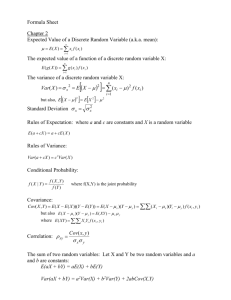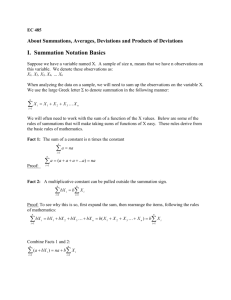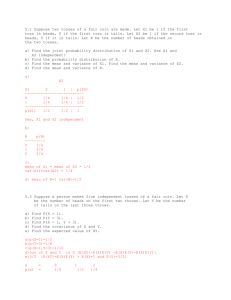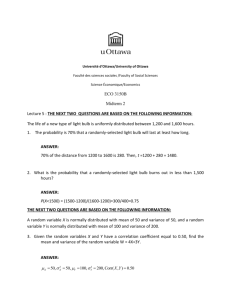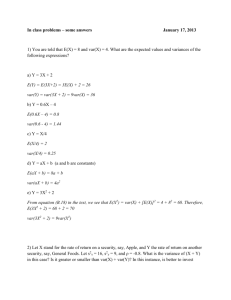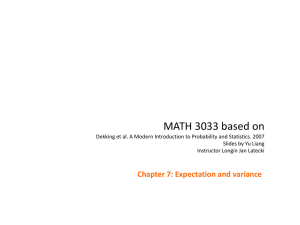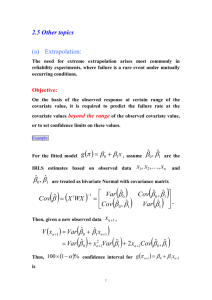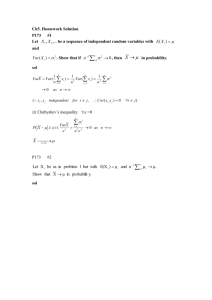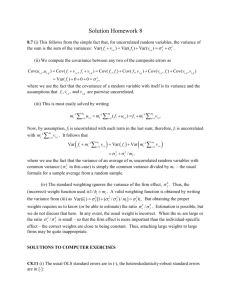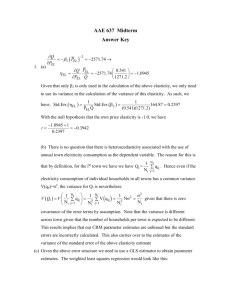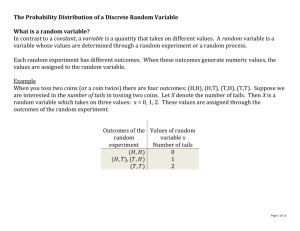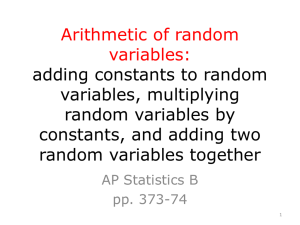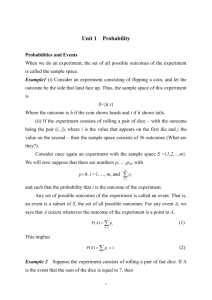4.2 Variance stabilization
advertisement
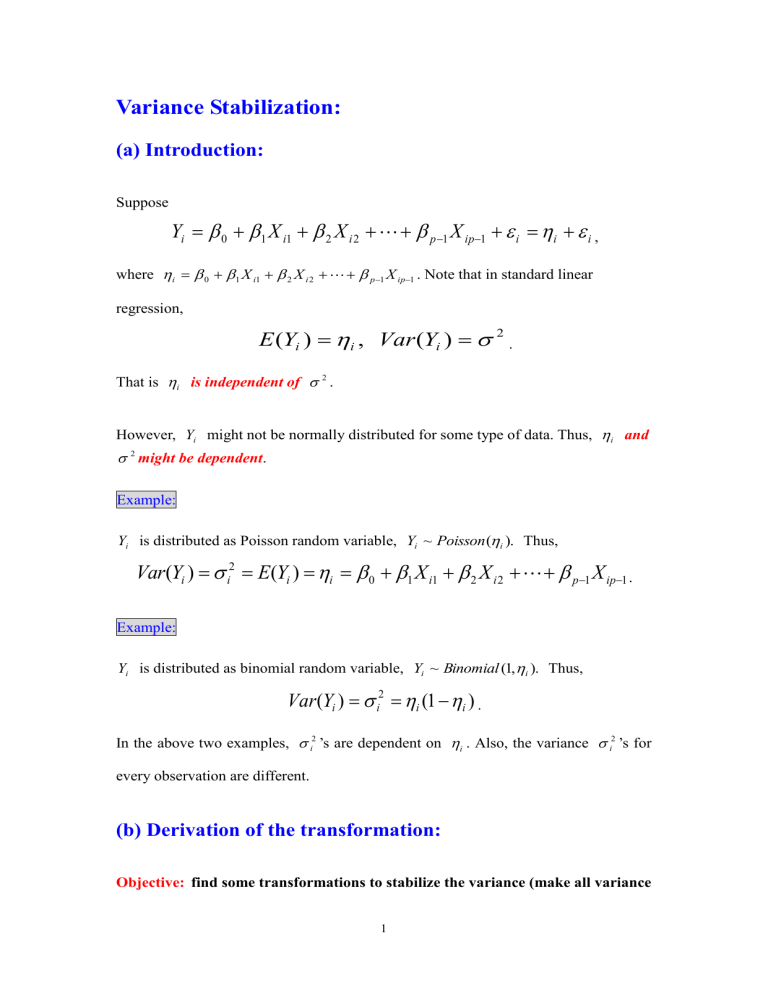
Variance Stabilization: (a) Introduction: Suppose Yi 0 1 X i1 2 X i 2 p 1 X ip1 i i i , where i 0 1 X i1 2 X i 2 p 1 X ip1 . Note that in standard linear regression, E (Yi ) i , Var (Yi ) 2 . That is i is independent of 2 . However, Yi might not be normally distributed for some type of data. Thus, i and 2 might be dependent. Example: Yi is distributed as Poisson random variable, Yi ~ Poisson (i ). Thus, Var(Yi ) i2 E(Yi ) i 0 1 X i1 2 X i 2 p1 X ip1 . Example: Yi is distributed as binomial random variable, Yi ~ Binomial (1,i ). Thus, Var (Yi ) i2 i (1 i ) . In the above two examples, i2 ’s are dependent on i . Also, the variance i2 ’s for every observation are different. (b) Derivation of the transformation: Objective: find some transformations to stabilize the variance (make all variance 1 i2 equal). Then, the standard least square method can be employed. Suppose Var (Yi ) i2 f 2 ( i ) and the transformation to stabilize the variance is h(Yi ) . Thus, by Taylor’s first order approximation, h(Yi ) h( i ) h ' ( i )(Yi i ) . Furthermore, Varh(Yi ) Varh(Yi ) h(i ) Var h' (i )(Yi i ) h' (i ) Var (Yi ) h' (i ) f 2 (i ) h' (i ) f (i ) 2 2 2 So, if 2 1 1 h ' ( x) , Varh(Yi ) f ( i ) 1 . f ( x) f ( i ) Result: for the observation Yi with E (Yi ) i and Var (Yi ) i2 f 2 ( i ) , then the transformation h(Yi ) satisfying h ' ( x) h( x) 1 , x f ( x) is the transformation to stabilize the variance. Example: Yi ~ Poisson (i ). h ' ( x) Var (Yi ) i f 2 ( i ) f ( x) x1 / 2 . 1 1 1/ 2 f ( x) x h( x) h ( x)dx ' 1 x1 / 2 dx x Therefore, 2 1 / 2 dx x 1/ 2 . h(Yi ) Yi1 / 2 can be used to stabilize the variance. Example: Yi ~ Binomial (1,i ). Var (Yi ) i (1 i ) f 2 ( i ) f ( x) x1 / 2 (1 x)1 / 2 . 1 1 1/ 2 f ( x) x (1 x)1 / 2 . 1 1 1 / 2 h( x) h ' ( x)dx 1 / 2 d sin x x (1 x)1 / 2 h ' ( x) Therefore, h(Yi ) sin 1 (Yi1 / 2 ) can be used to stabilize the variance. 3



